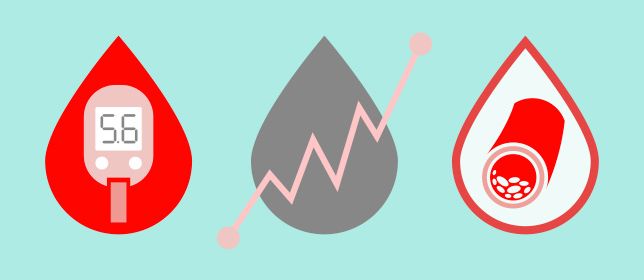
Diabetes
Latest News
Latest Videos

CME Content
More News

Robert A. Gabbay, MD, PhD, chief scientific and medical officer at the American Diabetes Association, discusses COVID-19 vaccinations among people with diabetes as they have been disproportionally affected by the pandemic.

This study presents challenges of implementing the CDC-approved Diabetes Prevention Program for Medicare beneficiaries at a large, integrated health care delivery system.

Results of a cross-sectional study detail characteristics among women with polycystic ovary syndrome (PCOS) who develop type 2 diabetes.

Results of a longitudinal study indicate community food accessibility factors may impact type 2 diabetes risk among veterans.

New research underscores racial/ethnic diabetes disparities in the United States.

As time goes on, we're finding out more and more benefits of sodium glucose co-transporter 2 (SGLT2) inhibitors, said Robert A. Gabbay, MD, PhD, the chief science and medical officer at the American Diabetes Association.

Results of a retrospective study found no benefits among older patients whose diabetes medication was intensified following short hospital admissions.

This analysis of a hospital billing database describes inpatient length of stay, intensive care unit length of stay, comorbidities, and costs for patients with diabetes after admission with hypoglycemia from long-term care or home.

Using data from a nationally representative sample, investigators sought to determine trends in insulin device use.

Some alcohol, but not more than 1 drink per day, was linked to a 55% lower risk of type 2 diabetes in women with a history of gestational diabetes.

Using electronic medical record data from Veterans Affairs, researchers found statin use was associated with a greater risk of diabetes progression.

Family support with medication management and recent urgent self-management concerns are 2 novel factors, among others, that predict completion of diabetes telehealth calls.

Patients with T2D had elevated blood glucose levels but there were no notable differences in levels between surviving and non-surviving patients with T2D.

Deepak L. Bhatt, MD, MPH, outlines the benefits of starting patients on sodium glucose co-transporter 2 (SGLT2) inhibitors while they are hospitalized.

Results of a representative study of patients at federally qualified health centers found Medicaid expansion was associated with reduced rates of uninsurance, improved blood pressure and diabetes control measures, and progress in closing racial care disparities over 5 years.


New data from the CREDENCE trial shows that the sodium glucose co-transporter 2 (SGLT2) inhibitor canagliflozin may reduce hyperkalemia risk in people with type 2 diabetes and chronic kidney disease who are using RAAS inhibitors.

A session at the 5th annual Heart in Diabetes Conference highlights the long-term risks of gestational diabetes.

Research Highlights Benefits of Aspirin, Monoclonal Antibody Use in Patients With Diabetes, COVID-19
New research presented at the 5th Heart in Diabetes Conference highlights potential therapeutic options for patients with COVID-19 and diabetes.

The sodium glucose co-transporter 2 (SGLT2) inhibitor reduced cardiovascular death and hospitalization for heart failure by 21% in results presented August 27 during the recent European Society of Cardiology Congress.

David McIntyre, MD, FRACP, describes lessons learned from the pandemic for ensuring appropriate continuation of care for pregnant patients with diabetes.

Native American and Black youth aged 10 to 19 years had the highest incidence of type 2 diabetes overall.

Deepak L. Bhatt, MD, MPH, executive director of interventional cardiovascular programs at Brigham and Women’s Hospital Heart & Vascular Center and professor of medicine at Harvard Medical School, outlines the role that sodium glucose co-transporter (SGLT) inhibitors play in patients with diabetes and diminished glomerular filtration rates.

The United States Preventive Services Task Force (USPSTF) lowered its recommended screening age for type 2 diabetes and prediabetes from 40 to 35 years among overweight and obese individuals.

Adding a sodium-glucose co-transporter 2 (SGLT2) inhibitor dominated switching to a glucagon-like peptide 1 receptor agonist over the lifetimes of patients with type 2 diabetes not at glycated hemoglobin A1c target after treatment with metformin plus a dipeptidyl peptidase-4 inhibitor.





















































